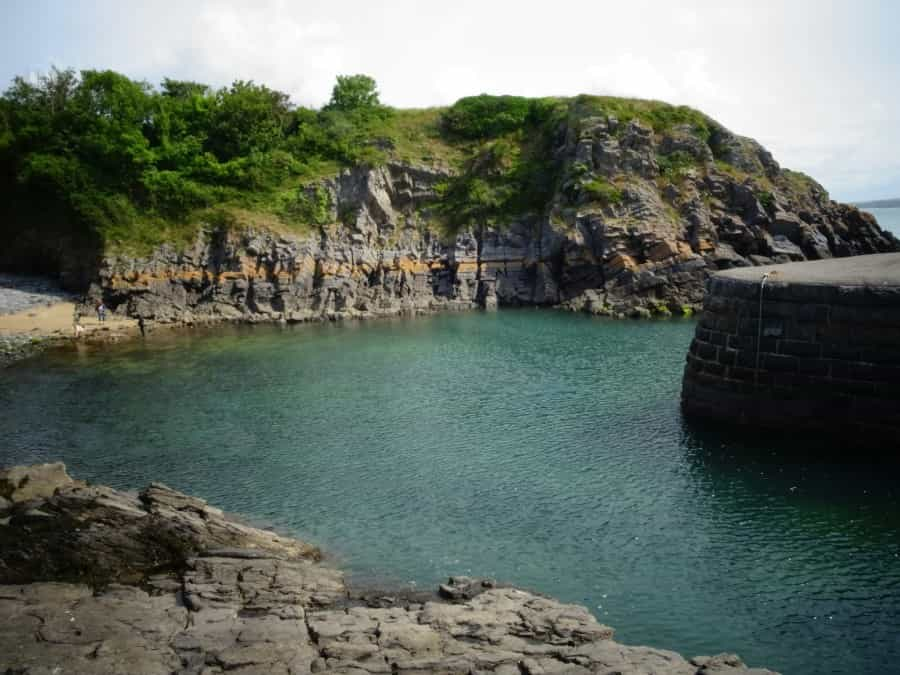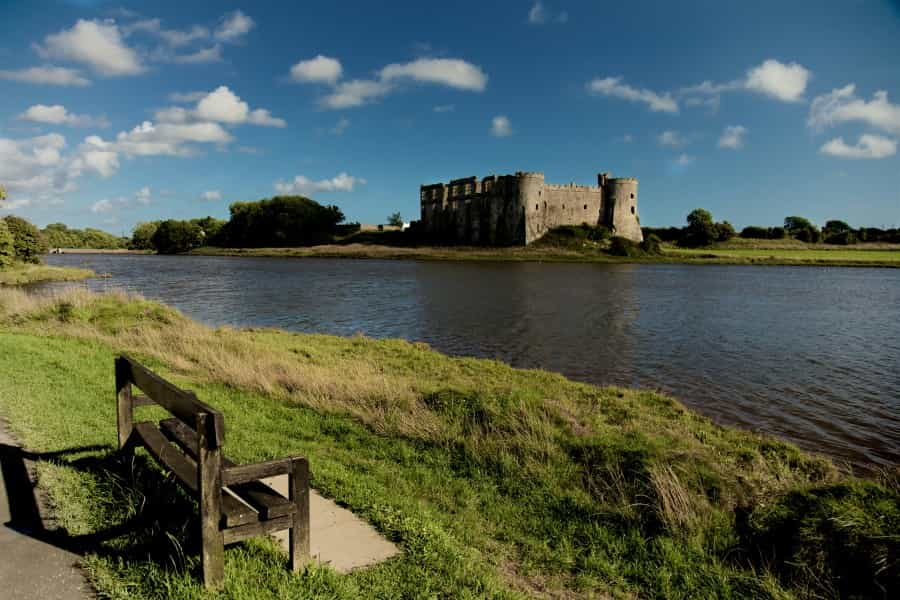Accessibility in the Pembrokeshire Coast National Park

Britain’s national parks are committed to ensuring that the outdoors are for everyone, and the Pembrokeshire Coast National Park is no exception. If you’re planning a holiday here, read on for our guide to accessible activities on the Pembrokeshire coast, which takes in easy-to-reach sites on the 186-mile coast path, spectacular easy-access viewpoints and beaches with special provisions for wheelchair users, nature reserves and a haunted medieval castle, as well as information on all the facilities available to help you make the most of your visit.
Accessible trails on the Pembrokeshire Coast
There are plenty of accessible walks to enjoy along the Pembrokeshire Coast Path. Here are some of our favourites.
Newport and the Nevern Estuary
The pretty town of Newport sits at the mouth of the River Nevern, with easy access to the Pembrokeshire Coast Path. There are two accessible walks from Parrog, a small harbour at the mouth of the estuary, where there’s a convenient car park with accessible toilets and designated parking spaces for disabled visitors.
Parrog to Iron Bridge
This smooth, level accessible path runs upstream alongside the estuary for around 1.5 miles to the Iron Bridge where the road crosses the river, and is suitable for wheelchairs and pushchairs. Along the way there are superb views of the river, the coast and surrounding countryside, with a huge expanse of water at high tide and extensive mudflats at low tide. The area around the bridge is a wildfowl conservation area and you can spot birds including waders, grebes, herons, swans and kingfishers. The bridge is a great vantage point for watching the sunset, and also a convenient pickup point if you don’t fancy retracing your steps on the return journey.
Parrog to Cwm
Accessible at low tide, this shorter (0.8-mile) track runs past stone cottages and rocky coves for a short distance towards the sea. At the end is a viewpoint with expansive vistas of the estuary, the bay and Newport Sands beach, a huge stretch of white sand backed by high dunes and dramatic cliffs.
As an added bonus, if you like the look of the beach on the other side of the river, there’s access via a slipway and it’s possible to park your car on the firm sand. There’s a beach wheelchair available for use at the café by the car park, bookable through the national park’s website.
St Govan’s Head

The mile-long stretch of the Pembrokeshire Coast Path at St Govan’s Head has great views of the coastline and the 13th-century St Govan’s Chapel. It runs along the top of the cliffs on a surfaced path from the car park at the chapel (which has designated spaces for disabled visitors) to an old coastguard station, with the chance to spot seabirds including guillemots, razorbills and kittiwakes en route. Additional sections of the path here are rougher, but you can extend your walk if you have a trike or a mobility scooter.
The Komoot website has a full description of the walk, with pictures and a downloadable GPX file of the route, and the wheelchair-accessible Coastal Cruiser bus service can drop you off at the car park.
Please note: The path is situated on the government’s Castlemartin firing range, so make sure you check access and firing times before you plan a visit.
Haroldston Chins
The two dramatic viewpoints on the Pembrokeshire Coast Path at Haroldston Chins are accessible via an easy 0.8-mile tarmac path that's suitable for wheelchairs and pushchairs. There are benches along the way and at the viewpoints, which have superb views over St Brides Bay, Rickets Head, the St Davids Peninsula and Ramsey Island, as well as the precipitous black shale cliffs along the coast.
There’s a car park reserved for Blue Badge holders at the start of the walk, and you can also access the site via the wheelchair-accessible Puffin Shuttle bus service.
Coastal access and facilities
The Pembrokeshire Coast National Park is committed to access for all visitors, and its website has details of more than 30 easy-access viewpoints along the coast, all with places to park your car. If you’d like to spend some time on the sand, there’s also a page listing easy-access beaches, with details of the facilities available, including (free) beach wheelchairs in some cases.
Accessible attractions and activities
The Stackpole Estate

On the site of a former manor house near Barafundle Bay, the Stackpole Estate has a nature reserve, woodland and eight miles of coastline to explore. Three specially designed routes accessible to trampers, assisted wheelchairs and sturdy pushchairs start at the Stackpole Centre and take in the rose garden and summer house at Lodge Park Woods, Bosherston Lakes (famous for their lily ponds and resident otters) and Stackpole Quay, where an accessible tea room overlooks the dramatic cliffs and a small pebbled beach.
Full details of accessibility on the estate are available on the National Trust website, which also has a handy downloadable map with details of all routes and facilities at the site. Parking for Blue Badge holders in all of the estate’s car parks is free, and an all-terrain mobility scooter and a beach wheelchair are available to borrow (please book in advance by calling 01646 623110).
Oriel y Parc National Park Discovery Centre
Set in a thoughtfully designed building in St David’s, Oriel y Parc is an eco-friendly visitor centre and gallery is a great place to get your bearings before exploring the park. Alongside lots of information on things to see and do, it includes a gallery with art and objects from the collections of Amgueddfa Cymru (Museum Wales), exhibitions of work from artists and craftsmen inspired by the park, and a Discovery Room where children can learn about the local landscape and culture. There’s a regular programme of talks, events and markets throughout the year, and a lovely café that’s open seven days a week.
The car park outside has dedicated Blue Badge spaces and most of the centre is on one level, with easy access, accessible toilets and a wheelchair and a mobility scooter available to use. A lift provides access to the upstairs gallery.
Carew Castle and Tidal Mill

Set beside a serene 23-acre mill pond on the edge of the park near Pembroke, Carew Castle (open March to November, from 10am) is a handsome medieval ruin with later Tudor and Elizabethan additions. On a visit here you can explore the remains of the Great Hall, the Ghost Room (look out for the ‘white lady’ and a barbary ape) and a walled garden, with an informative audio tour to give everything some context. Details of events held here throughout the year are available on the castle’s website, and there’s a fascinating page on the building’s history (with some great pictures) on the Castle Wales website.
The site also features the only restored Tidal Mill in Wales, which dates back to the early 19th century and is still home to its original machinery.
A wheelchair-friendly path around the mill pond links both sites, and en route you can spot redshanks, curlews, sandpipers and shelducks. Starlings also nest here in late spring and early summer, so if you’re lucky you may even witness a murmuration.
The castle car park has space for disabled visitors, and there’s a toilet with RADAR access at the visitor centre. There’s wheelchair access to the ground floor of both buildings, and a mobility scooter is available for hire from the Castle Visitor Centre (01646 651 782). Wheelchair users (and an accompanying carer) enjoy free entry.
The Welsh Wildlife Centre
Just outside the northern edge of the park near Cardigan, the Welsh Wildlife Centre (Wednesday to Sunday, 10am to 4pm, free to visit) is a striking timber and glass visitor centre on the 264-acre Teifi Marshes nature reserve, with films, live webcams and exhibitions on the local wildlife and a regular programme of events.
From here you can follow a hard-surfaced, wheelchair-friendly section of the Otter Trail to an accessible hide where you can spot kingfishers, otters and wading birds, or a 3km accessible trail through the Teifi Marshes to Cardigan Old Bridge.
The centre has designated accessible parking spaces, an accessible toilet, and lifts that make it fully accessible to wheelchair users, and the visitor centre and café are fully accessible to wheelchair users and those with limited mobility.
Accessible places to stay
For those who love camping, Pitchup has details of a good number of campsites in and around the Pembrokeshire Coast National Park with facilities for disabled visitors. Check out our list of Pembrokeshire campsites with disabled facilities and use the filters to find the ones that suit your needs.
Whether you want to explore the coast path, hunt for ghosts in a medieval castle, kick back on an accessible beach or just relax and enjoy some fabulous coastal views, there are lots of accessible activities to enjoy in the Pembrokeshire Coast National Park – get out there and explore!